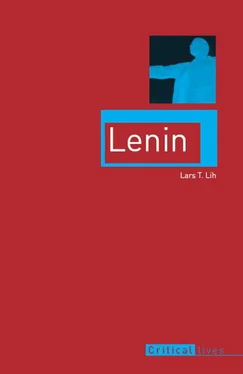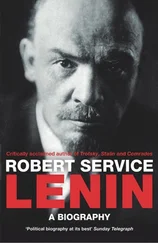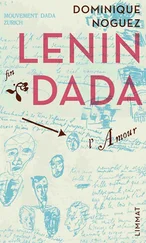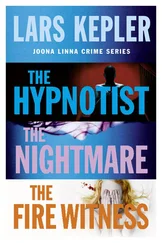Lars Lih - Lenin
Здесь есть возможность читать онлайн «Lars Lih - Lenin» весь текст электронной книги совершенно бесплатно (целиком полную версию без сокращений). В некоторых случаях можно слушать аудио, скачать через торрент в формате fb2 и присутствует краткое содержание. Город: London, Год выпуска: 2012, ISBN: 2012, Издательство: Reaktion Books, Жанр: Биографии и Мемуары, История, на английском языке. Описание произведения, (предисловие) а так же отзывы посетителей доступны на портале библиотеки ЛибКат.
- Название:Lenin
- Автор:
- Издательство:Reaktion Books
- Жанр:
- Год:2012
- Город:London
- ISBN:9781780230030
- Рейтинг книги:3 / 5. Голосов: 1
-
Избранное:Добавить в избранное
- Отзывы:
-
Ваша оценка:
- 60
- 1
- 2
- 3
- 4
- 5
Lenin: краткое содержание, описание и аннотация
Предлагаем к чтению аннотацию, описание, краткое содержание или предисловие (зависит от того, что написал сам автор книги «Lenin»). Если вы не нашли необходимую информацию о книге — напишите в комментариях, мы постараемся отыскать её.
Lenin — читать онлайн бесплатно полную книгу (весь текст) целиком
Ниже представлен текст книги, разбитый по страницам. Система сохранения места последней прочитанной страницы, позволяет с удобством читать онлайн бесплатно книгу «Lenin», без необходимости каждый раз заново искать на чём Вы остановились. Поставьте закладку, и сможете в любой момент перейти на страницу, на которой закончили чтение.
Интервал:
Закладка:
Lenin wanted to smash the bourgeois state apparatus, but he had a very different view of the bourgeois economic apparatus. This apparatus, perfected and given vast powers by the wartime state, must be carefully preserved and used as a ready-made tool by the revolutionary class. A perfect symbol for the imperialist economic apparatus was Germany’s Waffen- und Munitionsbeschaffungsamt (Weapons and Ammunition Supply Department), or WUMBA for short. Lenin’s vision of socialist revolution can be paraphrased as ‘WUMBA for the people’. As he wrote in December 1916:
The war has proved with special clarity and also in practical terms the truth that, before the war, was repeated by all the vozhdi of socialism that have now gone over to the bourgeoisie: contemporary capitalist society, especially in the advanced countries, has fully matured for the transition to socialism.
If, for instance, Germany can direct the economic life of 66 million people from a single centre , and strain the energies of the narod to wage a predatory war in the interests of 100 or 200 financial magnates or aristocrats, the monarchy, etc., then the same can be done, in the interests of nine-tenths of the population, by the non-propertied masses, if their struggle is directed by the purposive workers, liberated from social-imperialist and social-pacifist influence… Expropriate the banks and, relying on the masses, carry out in their interests the very same thing WUMBA is carrying out in Germany! 26
Lenin’s response to the crises of 1917 is best expressed, not by State and Revolution , but by two pamphlets from autumn 1917, one on the economic crisis ( The Threatening Catastrophe and How to Deal with It ) and the other on the political crisis ( Can the Bolsheviks Retain State Power? ). 27Here Lenin sets out at length the programme I have summarized as ‘Take the power!’ and ‘WUMBA for the people’. These slogans were intertwined. A key theme in Lenin’s rhetoric is emblazoned in a chapter title from one of Lenin’s pamphlets: ‘Control Measures Are Known to All and Easy to Take’. 28Land to the peasant, extensive economic regulation, peace diplomacy – these policies were all supported by the political rivals of the Bolsheviks, at least officially. And so, Lenin insisted, the only reason (and Lenin literally meant only ) that these policies were not carried out was the inherent class nature of the bourgeois vlast .
Lenin’s pamphlets from autumn 1917 also contain the famous and revealing image of the cook administering the state. The Russian word used by Lenin – kukarkha , a female cook – makes clear that he is alluding to the notorious circular of the tsarist education official cited in chapter One that discouraged the education of the children of cooks and similar persons:
We are not utopians. We know that an unskilled workman or a kukharka is not capable of stepping immediately into the administration of the state. In this we agree with the [liberal] Kadets, with Breshkovskaya, and with Tsereteli [leading figures in the SR and Menshevik parties respectively]. But we are different from these citizens in that we demand an immediate break with the prejudice that that only the rich, or chinovniki [bureaucrats] from rich families, are in a position to administer the state, and to carry out the ordinary, day-to-day work of administration. 29
Lenin is here truly Ilich, that is, son of Ilya, the educational reformer who fought within the tsarist system to make schools as widely available as possible.
Thus Lenin’s heroic scenario gave the Bolsheviks a programme that struck many as a plausible response to the accelerating crisis – and struck others as unmitigated demagoguery. The resulting polarization first came to a head in July 1917, when a popular demonstration against the Provisional Government almost turned into an attempted coup d’état . Lenin did not support any attempt at a coup at this time because he felt that the project of a government based on the soviets did not yet have strong majority support. Nevertheless, the Bolshevik party was implicated and orders were issued for the arrest of Lenin, Zinoviev, Trotsky (who had now joined the Bolshevik party) and other leaders. Lenin and Zinoviev evaded arrest and holed up in a hut near Lake Razliv in Finland, not too far from Petrograd (Krupskaya remained in Petrograd). Lenin had once more returned to the underground.
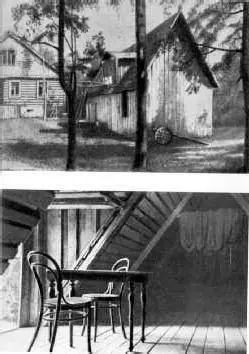
The real turning point came in August 1917. The forces of order – the army, the landowners, the bureaucracy and the businessmen – did not fail to perceive the phantom status of the Provisional Government and began to pin their hopes on the new head of the army, Lavr Kornilov. Kornilov’s confused attempt at a coup was beaten back by the combined efforts of the socialist parties, but the Bolsheviks were the ones who reaped the political credit.
Understandably so – the socialist moderates had wagered on a strategy of coalitions uniting socialists and non-socialists, a strategy widely perceived as bankrupt. The masses began to agree with the Bolsheviks: a coalition vlast was a bourgeois vlast , and the bourgeois vlast was leading the country to ruin.
The accelerating polarization of Russian society confirmed what can be termed the ili-ili (either-or) strategy of the Bolsheviks. As Stalin wrote in August 1917:
Either, or!
Either with the landlords and capitalists, and then the complete triumph of the counterrevolution.
Or with the proletariat and the poor peasantry, and then the complete triumph of the revolution.
The policy of conciliation and coalition is doomed to failure. 30
The moderate socialists followed the contrasting logic of ni-ni : neither the counterrevolutionary forces of the right nor the extremist forces on the left – neither Kornilov nor Lenin – but rather a broad coalition of constructive forces. The concrete makeup of the various coalitions shifted over the year, but they were always based on ni-ni logic. But the moderate socialists who placed their political wager on ni-ni coalitions saw their original prestige dissolve and their reputations destroyed.
Starting in September, Lenin began to bombard his fellow Bolsheviks with letters, articles, whatever it took, in order to convince them that the time for an uprising had come and could not be delayed. The stars were now all in alignment: coalition-mongering was completely discredited, the Bolsheviks had substantial majorities in the most important soviets, the peasants were taking matters into their own hands, a revolutionary situation was brewing in other countries at war. Any delay would mean a disastrous acceleration of economic and military collapse.
At a small meeting of Bolshevik leaders on 10 October Lenin got his way on the main point: the course was set for a seizure of power. Lenin wanted an immediate armed uprising but his party comrades steered a more prudent course. The Second Congress of Soviets, a gathering of representatives from local soviets throughout the country, was due to meet in a couple of weeks, and the Bolsheviks could connect the insurrection to the opening of the Second Congress. The Petrograd Soviet – now with a Bolshevik majority and chaired by Lev Trotsky – organized a Military Revolutionary Committee. This committee, created openly and legally, became the organ of insurrection and on the night of 24 October it deposed the Provisional Government by force. The Second Congress then accepted the greatness thrust on them by the Bolsheviks and announced the formation of a new vlast , one based directly on the soviets. On 25 October, Lenin emerged from hiding to announce that ‘the oppressed masses will themselves create a vlast ’, one in which ‘the bourgeoisie will have no share whatsoever’. 31The next day, he became Chairman of an all-Bolshevik Council of People’s Commissars.
Читать дальшеИнтервал:
Закладка:
Похожие книги на «Lenin»
Представляем Вашему вниманию похожие книги на «Lenin» списком для выбора. Мы отобрали схожую по названию и смыслу литературу в надежде предоставить читателям больше вариантов отыскать новые, интересные, ещё непрочитанные произведения.
Обсуждение, отзывы о книге «Lenin» и просто собственные мнения читателей. Оставьте ваши комментарии, напишите, что Вы думаете о произведении, его смысле или главных героях. Укажите что конкретно понравилось, а что нет, и почему Вы так считаете.
